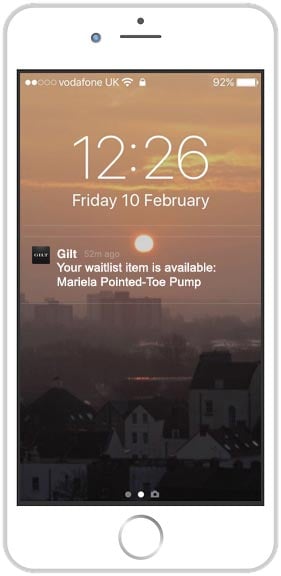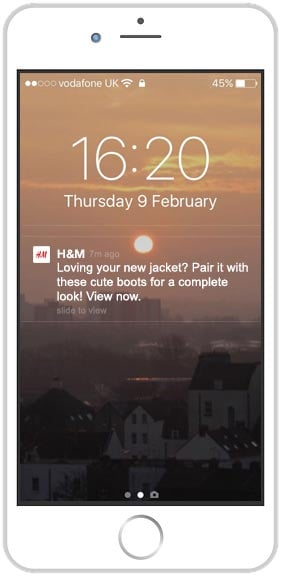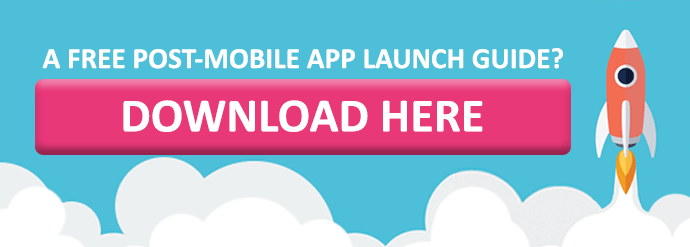Shove Off! Are Your Push Notifications Too Obtrusive?
The chances are, at some stage in your life, you have been frustrated by push notifications. Imagine you’re waiting on a text from a friend or a loved one when you feel the familiar short buzz in your pocket. “That’s Whatsapp,” you think, fumbling around in your pocket. You turn on your phone and…Candy Crush! That feeling of anticlimax is precisely the emotion that can lead to your new app being deleted and your brand being distrusted.
There are some clear advantages to using push notifications but you must be aware of the risks you face when fighting against the current. Localytics’ recent survey showed that 52% of smartphone owners believe that they are, “an annoying distraction.”
Navigating the minefield that is push notifications is a difficult balancing act. So here’s our dos and don’ts to make your decision a little easier.
Am I being obtrusive?
Don’t be a mobile junk mailer
You may think that blast notifications are a great way to get in front of your target audience as quickly and as often as possible. After all, in this age of mass information, how is your brand supposed to get noticed? But, honestly, this method is outdated and ineffective; here’s the evidence to prove it. A whopping 78% of people will opt out of notifications if they receive between six and 10 per week. Choose quality over quantity – once a week is typically the most successful.
Sell, sell, sell doesn’t work
The personal nature of apps makes sending generic sales notifications a real danger zone. A shameless plug not only reduces the chance of conversions; it also increases the chance of your app being deleted. A good example of sending a sales notification could be a personalised offer sent to a specific customer, like this one:

Don’t be too slow
Integration and timeliness can be another problem area for apps. For example, if you receive an email on your desktop and reply to it, you don’t want a push notification five minutes later showing that you have a new email. If it wastes users’ time and provides no value, it isn’t worth sending at all.


Don’t send inAPPropriate messages
It should go without saying that sending inappropriate messages is something you must avoid, at all costs. Always have your ideal customer personas in mind when drafting push notifications, be clear, and if there is a chance that it could reach the wrong person at the wrong time, it isn’t worth the risk. This extreme example was sent to a 9-year-old girl.
How Your Notifications Can Be Valuable
Ask permission
It’s only polite to ask permission to send push notifications, but avoid doing it in a generic and sterile way. Justify the reason why your users should tap ‘Allow’ and step in with your own message that represents your tone of voice and seems a lot more real - “From time to time, we want to send you really useful information. Don’t worry, we won’t spam you!”
Let the user get to grips with using the app and enjoy using it before asking for a favour too. And when you do ask, tell them why they should accept them. Push notifications are a privilege that can be an extremely effective way to engage with your audience. Don’t fall at the first hurdle.
As well as updating your push notifications, you can update your app itself. Find out more in our checklist.
Make opting-out painless
If any process of your UX is complicated, it will just put people off enjoying your app and, ultimately, respecting your brand. Just because you're making it difficult for users to opt-out of notifications, doesn't mean they'll magically start appreciating your push notifications. All you will achieve is skewing your data and, frankly, annoying users. Make all processes smooth and you’ll keep everyone happy.
Timing matters
Sending a message at the right time is crucial to the success of your push notification strategy. If your app might be used internationally, build this into your plan because no one wants to be woken up mid-dream and receive nothing but a trivial notification at 3:00am. By understanding your audience’s needs, and A/B testing different times of day, you will begin to see trends that will help you refine the ideal times for sending your notifications.
Personalise
A tailored message is much more likely to convert than a generic message. Based on Localytics’ survey, 48% of people want push notifications to be based on their preferences and location. So how do you get that information? Some of the most successful apps employ a feedback survey or a more detailed onboarding process. This way, you can segment your audience and deliver the most relevant content at the right time.

Utilise your data
Using the data from your app is a fantastic method of learning more about your audience, whether it’s geolocation, gender, nationality, age, time or content preference. By analysing your data, you can segment your audience and deliver the most personalised and relevant content at the right time.
When implemented correctly, there’s no doubt that a push notification strategy can drive more traffic, conversions, revenue and help you learn more about your audience. But before you jump on the bandwagon, assess how you can benefit your audience and provide content that they will find valuable.
DP
Related Posts
Got a project? Let's work together
Compsoft is a remote working company except for Thursdays when we work together from the Alton Maltings in Alton, Hampshire (UK). Our registered address is detailed below. We'd be delighted to have either a virtual chat with you or to make arrangements to meet in person.

